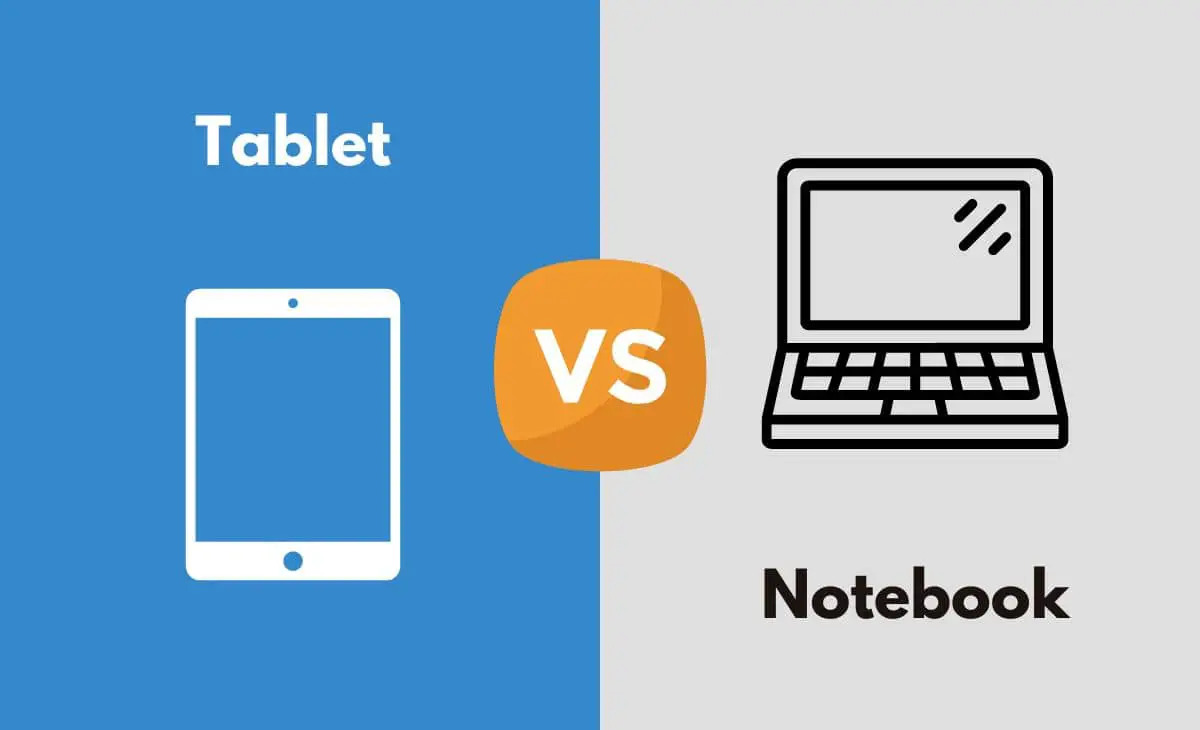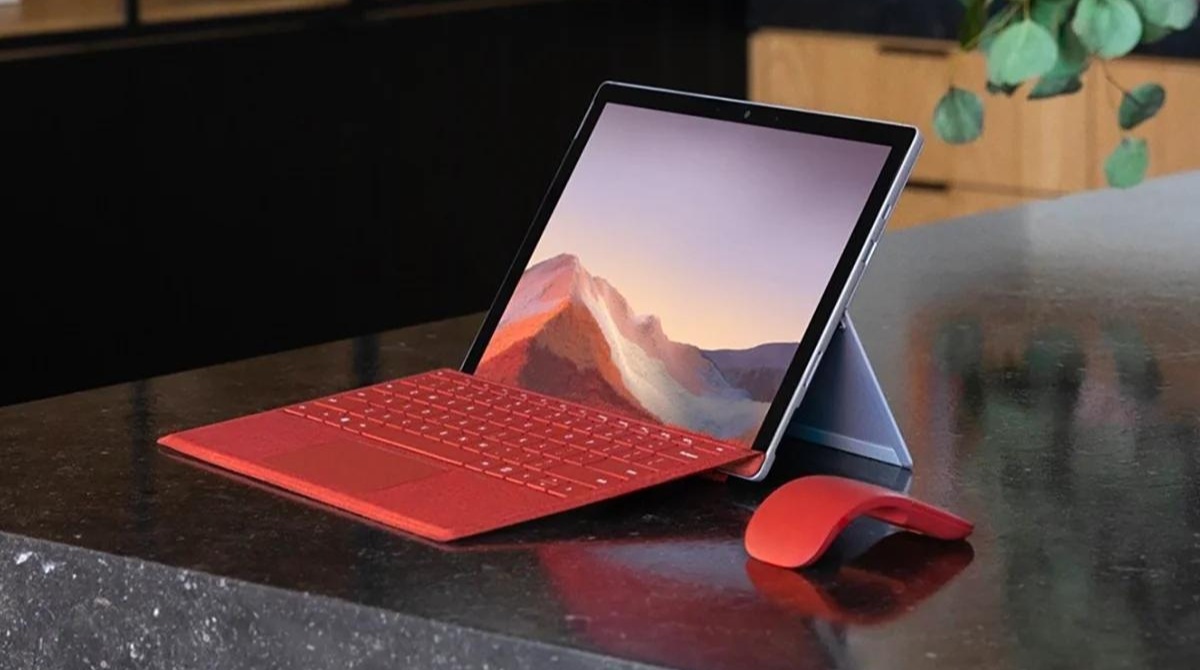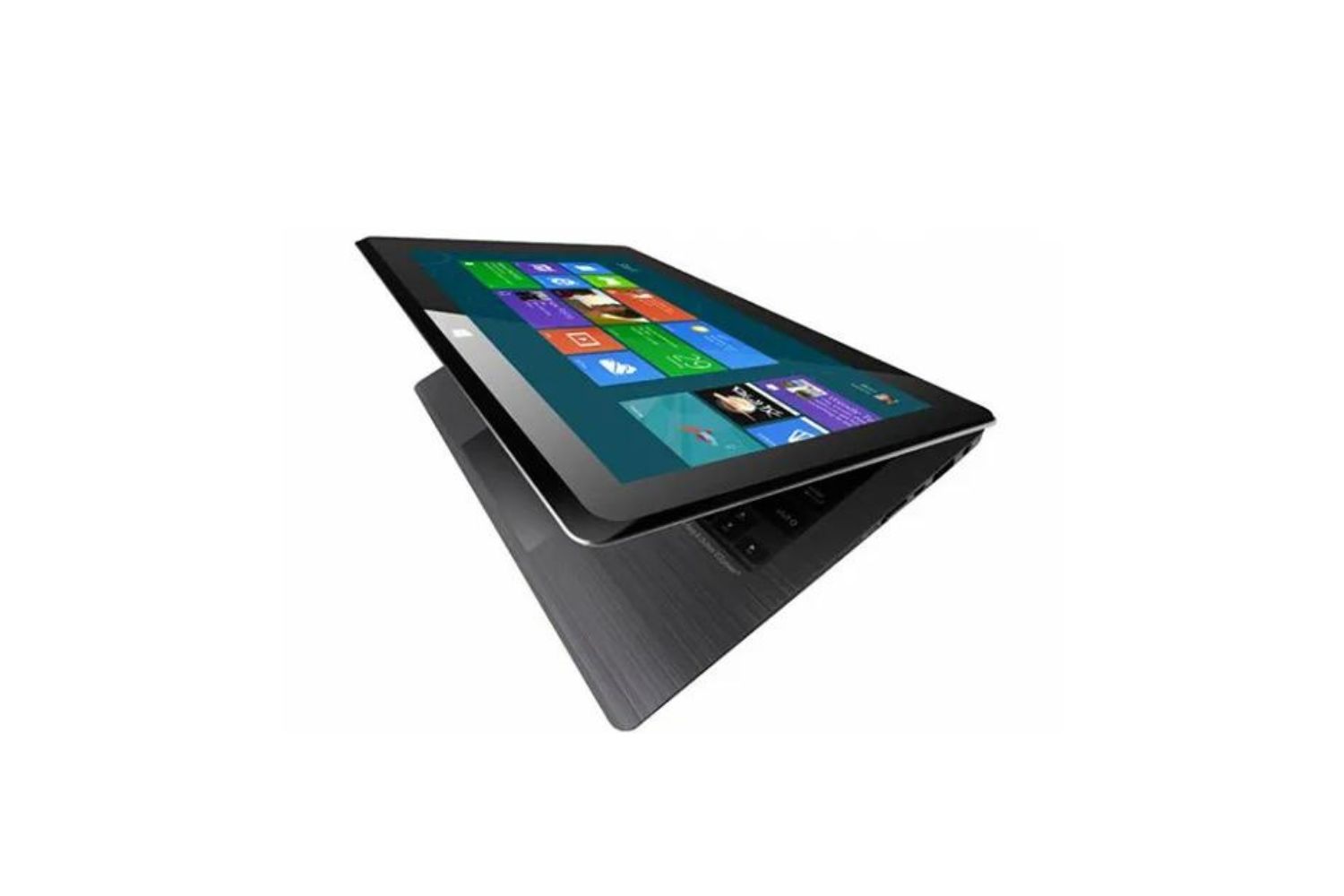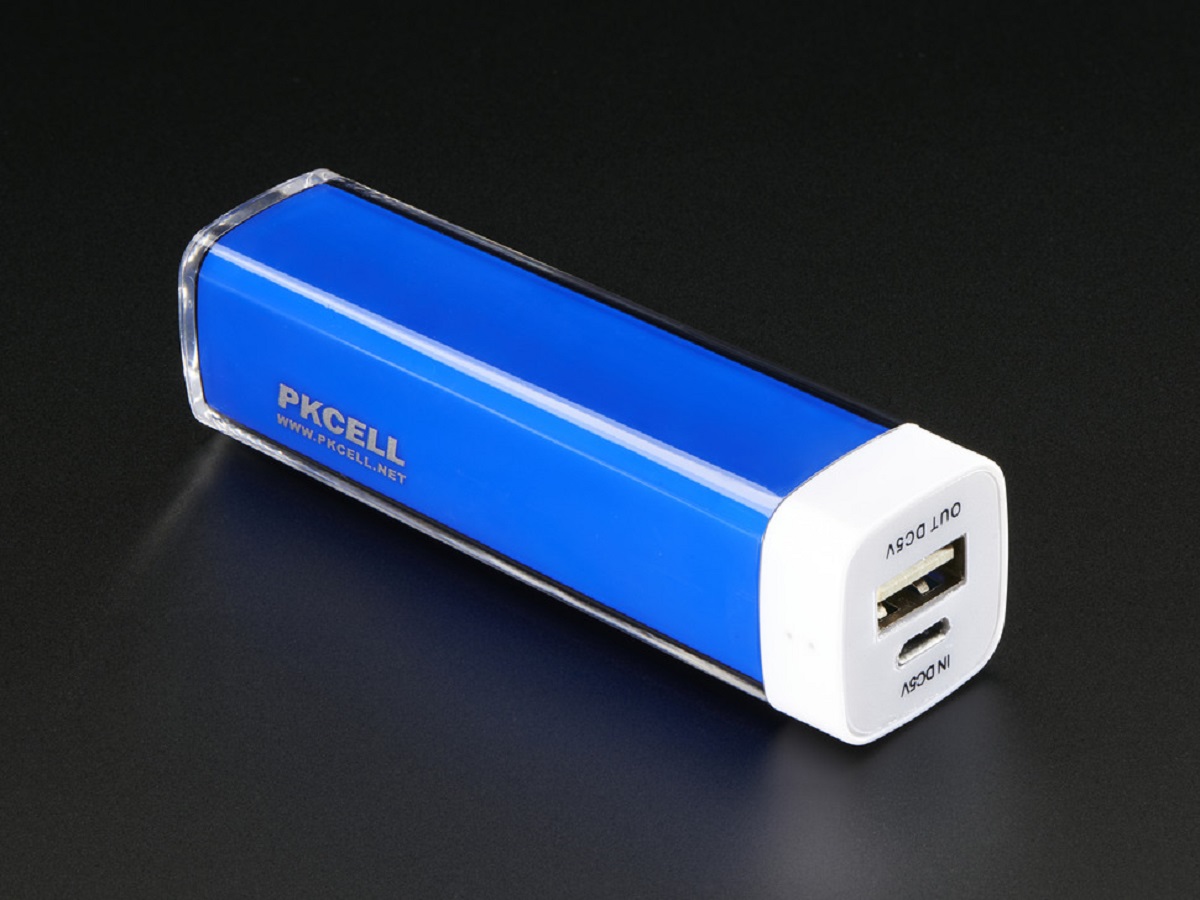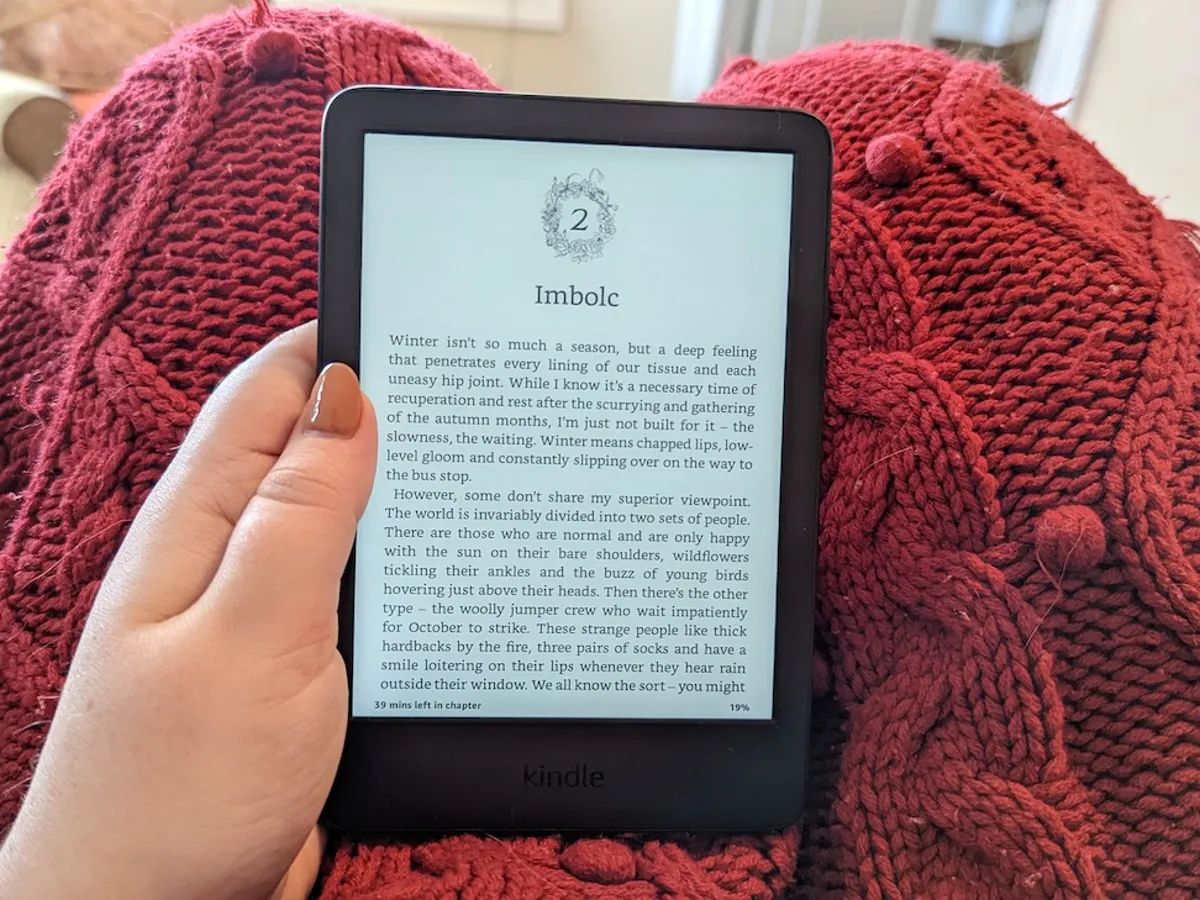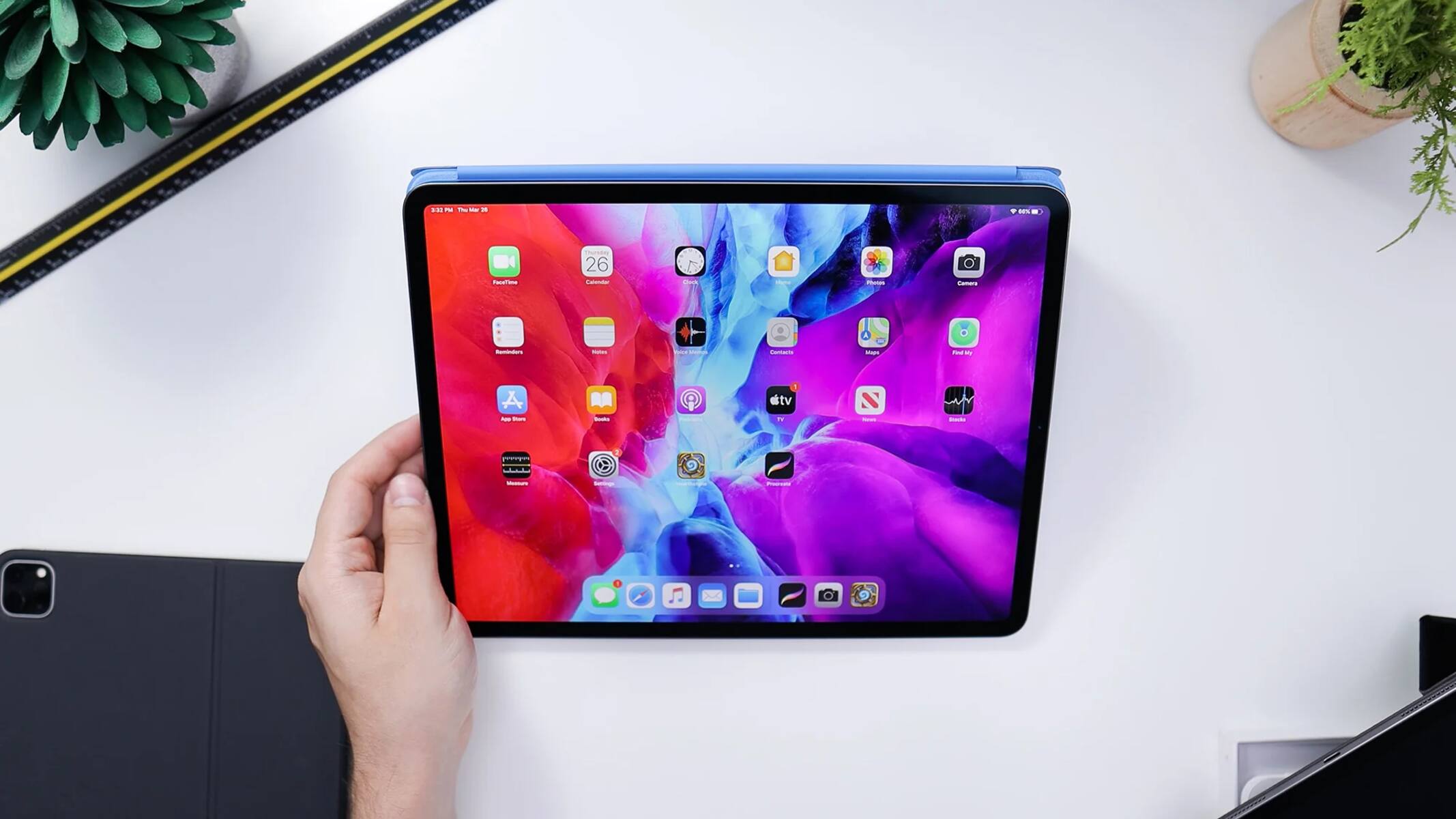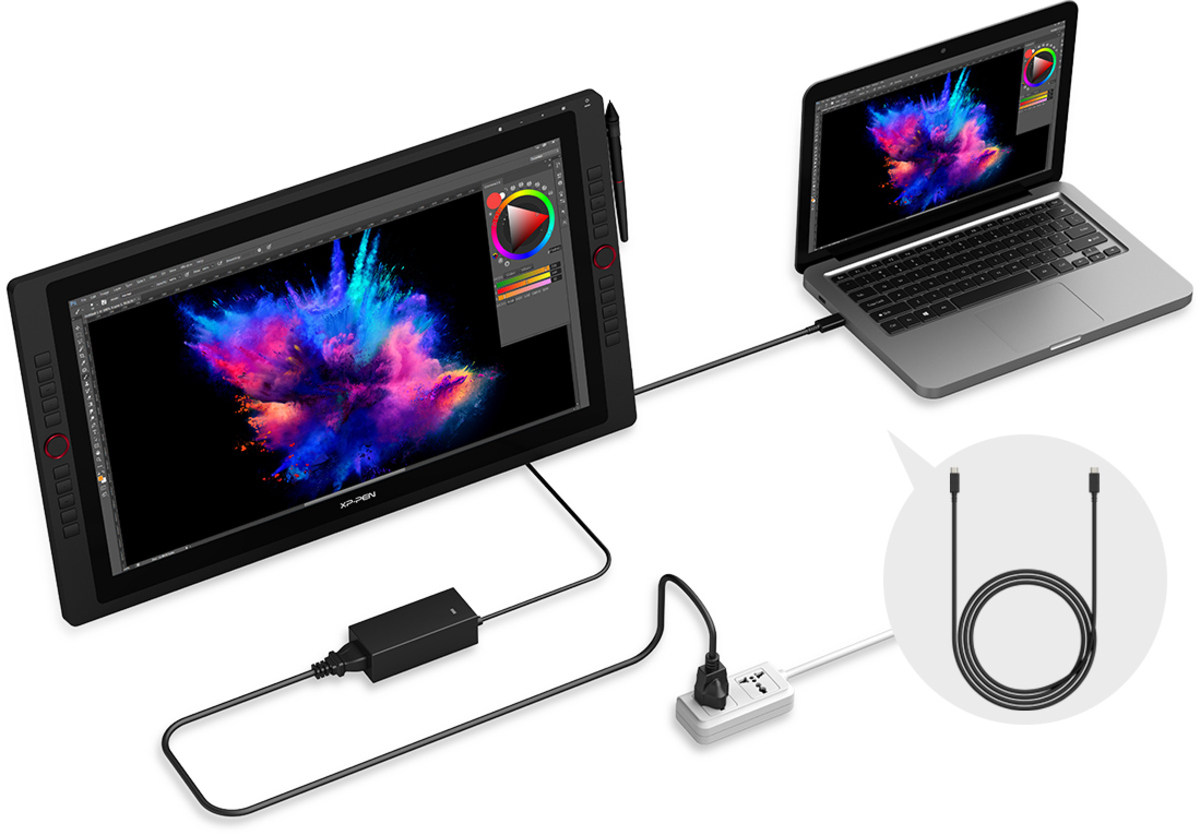Introduction
In the era of advanced technology, both tablets and laptops have become essential devices that cater to our daily computing needs. However, while they may seem similar, there are actually several key differences between the two. Understanding these distinctions can help you make an informed decision when deciding which device is best suited for your specific requirements.
A tablet is a portable computing device that typically features a touchscreen interface. It is designed for versatility and convenience, making it easy to carry and use in various settings. On the other hand, a laptop is a traditional computing device that consists of a keyboard and a screen, providing a more robust computing experience.
In this article, we will delve into the differences between tablets and laptops in terms of weight and portability, form and design, input methods, processing power, storage capacity, operating systems, battery life, and price. By examining these factors, you will gain a better understanding of which device aligns with your personal needs and preferences.
Whether you are a student, a professional, or someone who simply wants to stay connected on the go, knowing the distinctions between tablets and laptops will allow you to make an informed decision when investing in a new device. So, let’s dive into the details and explore the differences between tablets and laptops.
Weight and Portability
One of the primary factors to consider when choosing between a tablet and a laptop is their weight and portability. Tablets are known for their lightweight and compact design, making them highly portable. Most tablets weigh between 0.5 to 1.5 pounds, making them easy to carry in a bag or even hold in one hand.
On the other hand, laptops tend to be bulkier and heavier due to their additional components such as a physical keyboard and a larger battery. The weight of a laptop can vary significantly depending on its size and specifications, but they generally range from 2 to 8 pounds. While some lightweight laptops are available, they still tend to be heavier than tablets for comparable performance.
The portability factor also extends to the ease of use in various settings. Tablets are extremely convenient for on-the-go use, allowing you to perform tasks such as browsing the internet, checking emails, or streaming media while you’re out and about. Their compact form factor makes them ideal for tasks that require mobility, such as reading e-books or taking notes during meetings.
Laptops, on the other hand, are better suited for tasks that demand a more traditional computing experience. With a larger screen size and physical keyboard, laptops are more comfortable for extended periods of typing, content creation, or multitasking. While laptops are still portable, they are often used in settings where a stable surface, such as a desk or table, is available for optimal usage.
Overall, if portability is a top priority and you prefer a device that you can easily carry and use on the go, a tablet may be the better choice. However, if you require a device that offers a more robust computing experience and are willing to sacrifice some portability, a laptop may be the more suitable option.
Form and Design
The form and design of a device play a significant role in how we interact with and perceive it. Tablets and laptops differ in their form factors and designs, catering to different user preferences and usage scenarios.
Tablets are typically slim and sleek in design, characterized by a single screen with minimal bezels. They are primarily touchscreen devices, eliminating the need for a physical keyboard or mouse. The compact and lightweight form of tablets allows for easy handling and gesture-based interactions. Tablets are often preferred by users who value simplicity and a more hands-on, intuitive approach to computing.
Laptops, on the other hand, have a more traditional design with a clamshell form factor, featuring a hinged lid that opens to reveal a screen and a physical keyboard. The addition of a physical keyboard enables efficient typing and enhances productivity for tasks that require extensive text input. Laptops come in various sizes, from ultraportable options with smaller screens to larger models with enhanced display real estate for more immersive experiences.
Moreover, laptops offer the flexibility of different configurations, such as convertible laptops that can be used as both traditional laptops and tablets by rotating or detaching the screen. This versatility allows users to adapt the device to their specific needs and toggle between laptop and tablet mode as desired.
When considering the form and design, it’s essential to reflect on your preferred input method and the tasks you anticipate performing on the device. Tablets are well-suited for activities like browsing the internet, consuming media, playing games, and using touch-based apps. Laptops, on the other hand, excel in tasks that require extensive typing, content creation, and professional or academic work.
Ultimately, choosing between a tablet and a laptop in terms of form and design depends on your personal preferences and the specific use cases you anticipate. If you prioritize portability and touch-based interactions, a tablet’s slim and lightweight design may be the ideal choice. If you require a physical keyboard and a more traditional computing experience, a laptop’s form factor would likely suit your needs better.
Input Methods
When it comes to input methods, tablets and laptops offer distinct options that can impact your user experience and productivity.
Tablets primarily rely on touchscreen input, where you interact directly with the screen using your fingers or a stylus. This intuitive and tactile method allows for gestures such as swiping, tapping, and pinching, making it easy to navigate through apps, websites, and multimedia content. Touchscreen input is ideal for tasks like browsing, gaming, and consuming media, providing a hands-on and immersive experience.
Laptops, on the other hand, feature physical keyboards for text input and a trackpad or a mouse for cursor navigation. Physical keyboards offer a tactile and precise typing experience, enabling faster and more accurate input for tasks like writing documents, emails, or coding. The inclusion of a trackpad or a mouse allows for precise cursor control and facilitates multitasking, especially when working with multiple windows or applications simultaneously.
Moreover, laptops offer additional input options such as touchscreen capabilities or stylus support, depending on the model. This provides a hybrid experience where users can switch between traditional keyboard and trackpad input and touchscreen interactions, providing flexibility for different tasks and preferences.
It’s essential to consider the type of work you will be doing and your preferred input method when deciding between a tablet and a laptop. If you anticipate tasks that require extensive typing or precise cursor control, a laptop’s physical keyboard and trackpad/mouse combination will likely be more efficient. However, if you prioritize a more tactile and hands-on approach to interacting with your device, a tablet’s touchscreen input will offer a more intuitive experience.
Ultimately, the choice between tablets and laptops in terms of input methods revolves around personal preference, the nature of your tasks, and the level of productivity you seek in your computing experience.
Processing Power
Processing power is a crucial consideration when choosing between a tablet and a laptop, as it directly impacts the device’s performance and capability to handle different tasks.
Tablets generally have less processing power compared to laptops. This is due to their compact size and energy-efficient design. Tablets are typically powered by mobile processors, which are designed to prioritize power efficiency while providing sufficient performance for everyday tasks such as web browsing, media consumption, and light productivity. They are well-suited for casual use and running mobile apps smoothly.
Laptops, on the other hand, are equipped with more powerful processors that offer higher performance capabilities. This is especially true for laptops designed for productivity, gaming, or content creation. Powered by processors that are optimized for desktop-grade performance, laptops can handle resource-intensive applications, multitasking, and demanding tasks like video editing, 3D rendering, and gaming.
The processing power of laptops also allows for smoother multitasking, as they can handle multiple applications running simultaneously without significant performance degradation. This makes laptops more suitable for professionals or individuals who require advanced software tools or need to juggle between various tasks on a regular basis.
It’s important to note that while tablets may have lower processing power compared to laptops, they are still perfectly capable of handling everyday tasks such as web browsing, email, social media, and media streaming. If your computing needs primarily revolve around such activities and you don’t require intensive processing power, a tablet can suffice.
However, if you work with resource-demanding software, require heavy multitasking, or if you’re a gamer who wants to enjoy the latest high-performance games, a laptop with its superior processing power will be more suitable for your needs.
When considering processing power, it’s essential to evaluate your specific computing needs and the level of performance required for the tasks you perform regularly. This will help you determine whether a tablet’s processing power is sufficient for your needs or if you would benefit more from the higher processing power offered by a laptop.
Storage Capacity
Storage capacity is an important consideration when choosing between a tablet and a laptop, as it determines the amount of data you can store on your device.
Tablets generally have limited storage capacity compared to laptops. Most tablets offer storage options ranging from 16GB to 256GB. However, some tablets may have expandable storage through a microSD card, allowing you to increase the storage capacity according to your needs.
Laptops, on the other hand, typically offer larger storage capacities. Entry-level laptops may have storage options starting from 128GB, while mid-range and high-end laptops often come with storage capacities of 256GB or more. Additionally, laptops often provide options for even larger storage capacity through hard disk drives (HDD) or solid-state drives (SSD), allowing you to store large amounts of data like documents, multimedia files, and software installations.
When considering storage capacity, it’s crucial to assess your specific needs. If you primarily work with cloud storage or rely on streaming services for media consumption, a tablet’s limited storage capacity may be sufficient for your needs. Tablets are designed to be more cloud-centric and often offer seamless integration with cloud storage platforms.
On the other hand, if you work with extensive files, multimedia content, or require offline access to your data, a laptop’s larger storage capacity may be more suitable. The additional storage capacity allows you to store your files locally, reducing dependence on cloud services and ensuring faster access to your data.
It is worth noting that both tablets and laptops offer the option to expand storage capacity. Tablets with a microSD card slot allow for additional storage, albeit at a smaller scale. Laptops offer the ability to upgrade or add external storage devices, providing greater flexibility in managing your storage needs.
Ultimately, the choice between a tablet and a laptop in terms of storage capacity depends on the amount of data you need to store, your reliance on cloud services, and your preference for local storage versus cloud-based storage solutions.
Operating Systems
The choice of operating system is a crucial factor when deciding between a tablet and a laptop, as it influences the user experience, app availability, and compatibility with software or services.
Tablets typically run on mobile operating systems. The most common operating systems for tablets are iOS, developed by Apple, and Android, developed by Google. These operating systems are specifically designed for touch-based interfaces and offer a user-friendly and intuitive experience. They provide access to a vast array of mobile apps through app stores, allowing users to download and use various applications, games, and productivity tools.
Laptops, on the other hand, primarily run on desktop operating systems such as Windows, macOS, and Linux. These operating systems offer a more traditional and robust computing experience, optimized for keyboard and mouse input. They provide a wider range of software and applications, including productivity suites, professional software, coding environments, and gaming platforms.
The choice of operating system should align with your specific needs and preferences. If you value a seamless integration with other Apple devices and prefer a streamlined user experience, an iOS-powered tablet or a macOS-powered laptop might be the right fit. Similarly, if you are invested in the Android ecosystem and prefer the openness and customization options it offers, an Android tablet or a Windows-powered laptop could be more suitable.
Additionally, it’s important to consider software compatibility. Desktop operating systems like Windows and macOS generally have better compatibility with a wider range of software applications, including enterprise-level software, design tools, and specialized applications. While mobile operating systems have a vast app store, some software may have limited or different versions available for mobile devices.
Another factor to consider is the availability of updates and support. Desktop operating systems typically receive regular updates and long-term support from their respective manufacturers, ensuring security patches and new features. Mobile operating systems also receive updates, but the roll-out of these updates may depend on the device manufacturer and hardware compatibility.
Ultimately, the choice of operating system for your device depends on your specific needs, preferred user experience, app availability, and software compatibility. Assessing these factors will help you make an informed decision between a tablet and a laptop based on the operating system that best aligns with your requirements.
Battery Life
Battery life is a critical aspect to consider when choosing between a tablet and a laptop, ensuring you have sufficient power for your intended usage without constantly needing to recharge.
Tablets are known for their impressive battery life, often outperforming laptops in this regard. Due to their energy-efficient design and smaller form factor, tablets can provide extended battery life, ranging from 8 to 12 hours or even more, depending on the model and usage patterns. This makes tablets ideal for activities such as reading, watching movies, or browsing the internet while on the go.
Laptops, on the other hand, generally have shorter battery life compared to tablets. The larger screens, more powerful processors, and additional components such as keyboard backlighting and higher system requirements contribute to increased power consumption. However, advancements in technology have allowed laptops to improve their battery efficiency, with many models now offering battery life of around 8 to 10 hours, providing ample power for a day’s work or study.
It’s important to note that battery life can vary significantly based on factors such as screen brightness, usage intensity, running applications, and power management settings. As a general rule, laptops with larger batteries or the option for extended battery packs tend to offer longer battery life.
If you require a device for long periods of use without access to a power source, a tablet’s superior battery life may be advantageous. Tablets are particularly useful for frequent travelers or individuals who work or study in environments where charging options are limited.
However, if you’re mostly stationary and have access to power outlets throughout the day, the slightly shorter battery life of a laptop may not be a major concern. Laptops can easily be recharged during breaks or when not in use.
Be sure to consider your specific lifestyle and work demands when evaluating battery life. If you find yourself constantly on the move or in situations where charging opportunities are limited, a tablet’s extended battery life could be a deciding factor. If you have easy access to power sources and prioritize the other features offered by laptops, the slightly shorter battery life may not be a significant drawback.
Ultimately, battery life plays a crucial role in determining the convenience and usability of a tablet or a laptop, and understanding your usage patterns and habits will help you make a well-informed decision.
Price
Price is a significant factor to consider when deciding between a tablet and a laptop, as it directly influences your budget and the overall value you receive from the device.
Tablets generally offer a more affordable entry point compared to laptops. Depending on the brand, specifications, and storage capacity, tablets can range from budget-friendly options to higher-end models with premium features. Entry-level tablets are often priced competitively and provide basic functionality for everyday tasks, making them suitable for casual users or those with limited computing needs.
Laptops, on the other hand, tend to have a higher price range. The cost of a laptop can vary significantly based on the brand, specifications, display size, processing power, storage capacity, and additional features. Laptops designed for specific purposes such as gaming or professional use often come with a higher price tag due to their enhanced performance, dedicated graphics, and specialized hardware.
It’s important to consider your budget and the intended use of the device when assessing the price. If you require a device primarily for web browsing, media consumption, and light productivity, a tablet may be a more cost-effective choice. Tablets offer a range of options across different price points, allowing you to find a device that fits your budget without compromising on essential features.
However, if you need a device for more demanding tasks, such as complex software applications, multimedia editing, gaming, or extensive multitasking, a laptop may be a better investment. While laptops may come with a higher price tag, they offer more processing power, storage capacity, and versatility that can support your professional or academic needs.
Consider the longevity and future-proofing of your investment as well. While tablets may require less upfront investment, they may have a shorter lifespan in terms of software updates and compatibility with newer applications. Laptops, in comparison, may offer a longer lifespan and can often be upgraded in terms of memory, storage, or other hardware components.
Ultimately, the price of a tablet or laptop should align with your budget, usage requirements, and the value that the device brings to your computing experience. Evaluating the features, performance, and longevity of each option will help you make an informed decision based on the price that suits your needs best.
Conclusion
When deciding between a tablet and a laptop, it’s important to consider the unique features and characteristics of each device to determine which one best suits your needs and preferences.
Tablets offer portability, lightweight design, touch-based interactions, and impressive battery life. They are ideal for on-the-go use, web browsing, media consumption, and basic productivity tasks. Tablets are a budget-friendly option, with a variety of models available at different price points.
Laptops, on the other hand, provide a more robust computing experience with higher processing power, larger storage capacity, and a range of input options including physical keyboards and trackpads. Laptops are better suited for tasks that require extensive typing, multitasking, resource-intensive applications, and professional work. They offer a wider range of software options and are more suitable for gaming or content creation.
The choice between a tablet and a laptop ultimately depends on your specific needs, budget, and preference. If portability, touch-based interactions, and casual computing tasks are your priority, a tablet may be the right choice. On the other hand, if you need a device for extensive typing, resource-demanding applications, or a more versatile computing experience, a laptop would be the better option.
Consider factors such as weight and portability, form and design, input methods, processing power, storage capacity, operating systems, battery life, and price when making your decision. It’s important to evaluate your own requirements and find the device that aligns with your computing needs, usage patterns, and budget constraints.
Ultimately, both tablets and laptops have their own strengths and weaknesses. By carefully considering these factors and conducting thorough research, you can make an informed decision and select the device that will best enhance your productivity, entertainment, and overall computing experience.







